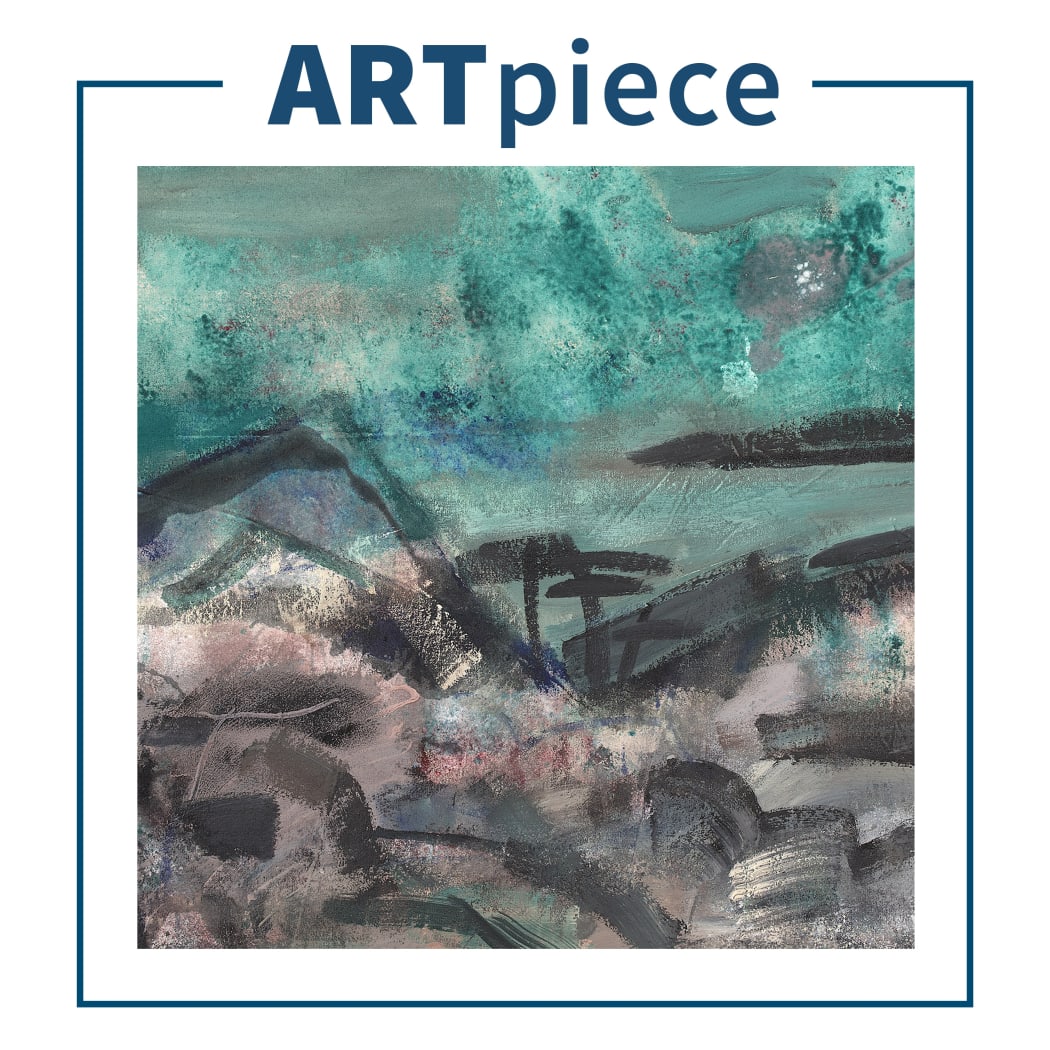
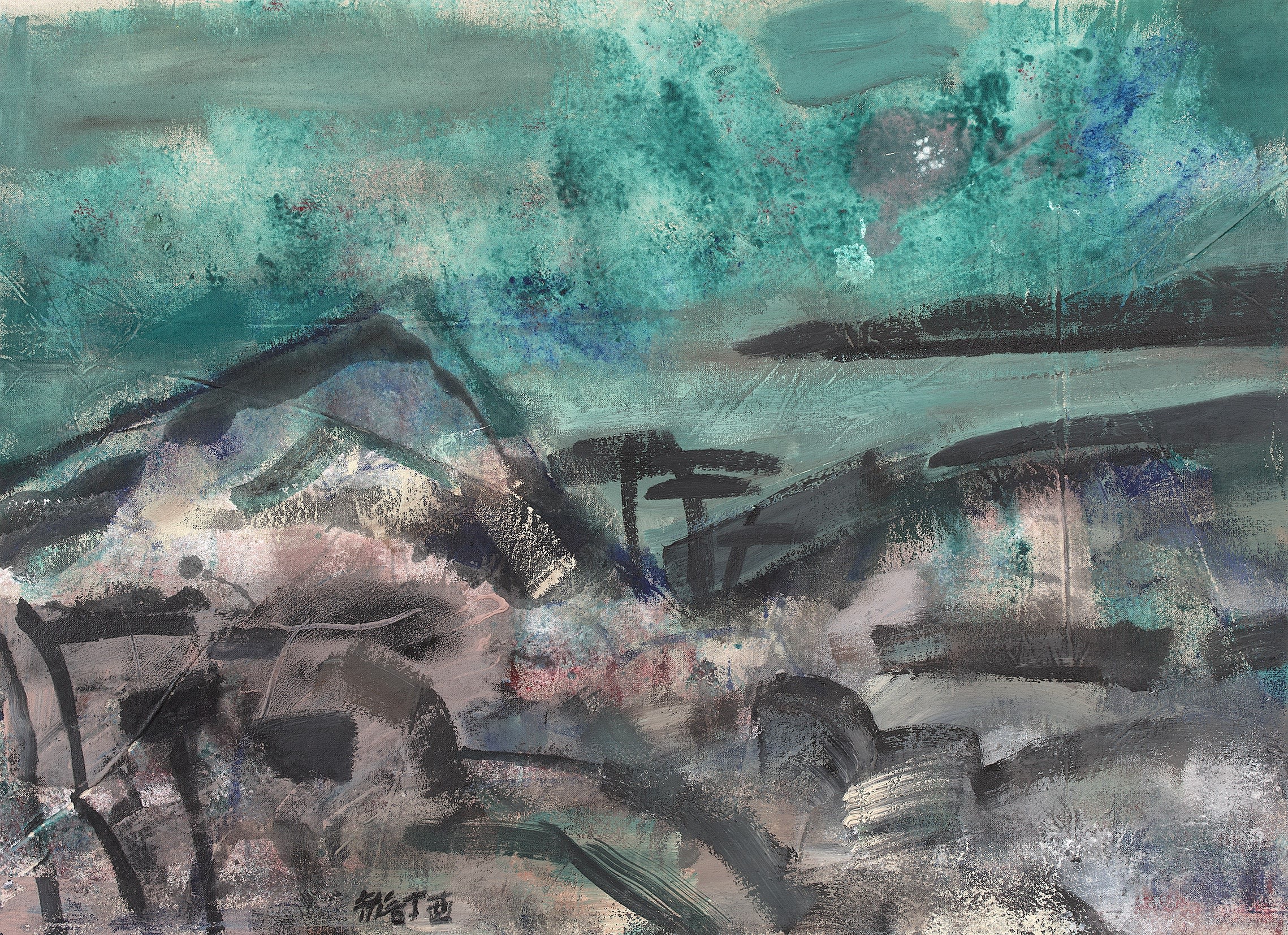
Wang Jieyin, Green Skies, 2017 Acrylic on canvas 73 x 100cm
This week we compare Shanghai-based artist Wang Jieyin's Green Skies painting with the High Tang Dynasty cave painting, Parable of the Illusory City from the Lotus Sutra.
Beate Reifenscheid, Director of Museum Ludwig in Germany writes, "There is something that I think the Western painters can learn from Mr Wang, as no German painters would treat nature with this kind of landscape gratitude. His oil paintings are inspired by traditional Chinese landscape paintings, but it is not simply about returning to tradition. There is a rupture with tradition - a temporal connection - created between human and nature when the nature is re-summoned, giving a sense of tension."
In his six-decade painting career, Wang Jieyin, a 79-year-old artist from Shanghai, has gone from print making to oil painting, from canvas to ink, from imagery and abstract onto infra-image. Through his individual and imaginative way, he has been representing 'nature', avoiding figurative painting en plein air and programmed imagery. His painting is not abstract despite its abstractness. Combining the quality of ink and that of oil, its simplified yet decorative lines as well as abstract dots and geometric forms construct memory containing images of traditional landscape painting while integrating strange modern urban spaces. In facing the destruction and ruined state of nature, Wang produces a forceful, fantastic and mysterious profound state even in the post-industrial era, forming his own grand paintings, making him a representative artist of Chinese painting.
Green Skies was created by Wang Jieyin in 2017. In this painting, Wang expresses his yearning for the green sky in the style of abstract modernism, and uses acrylic to present the cyan colour of traditional Chinese ink on the upper half of the composition, imprinting a sense of nature and tranquility in the centre of the painting and conveying the Buddhist idea of “self-purification” to the viewers.

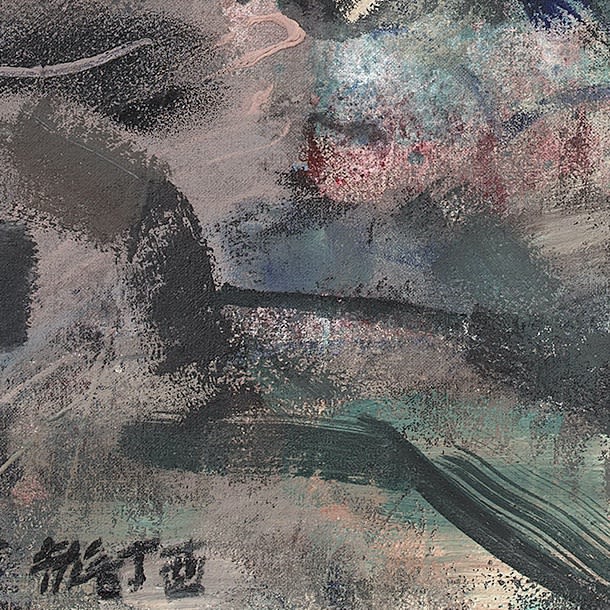
Wang once said, “I was born to be a painter.” Through art, he breaks the barriers between tradition and modernity, as well as the East and the West, while his detachment from the secular world and perseverance has established the “realm of transcendence” in his works.
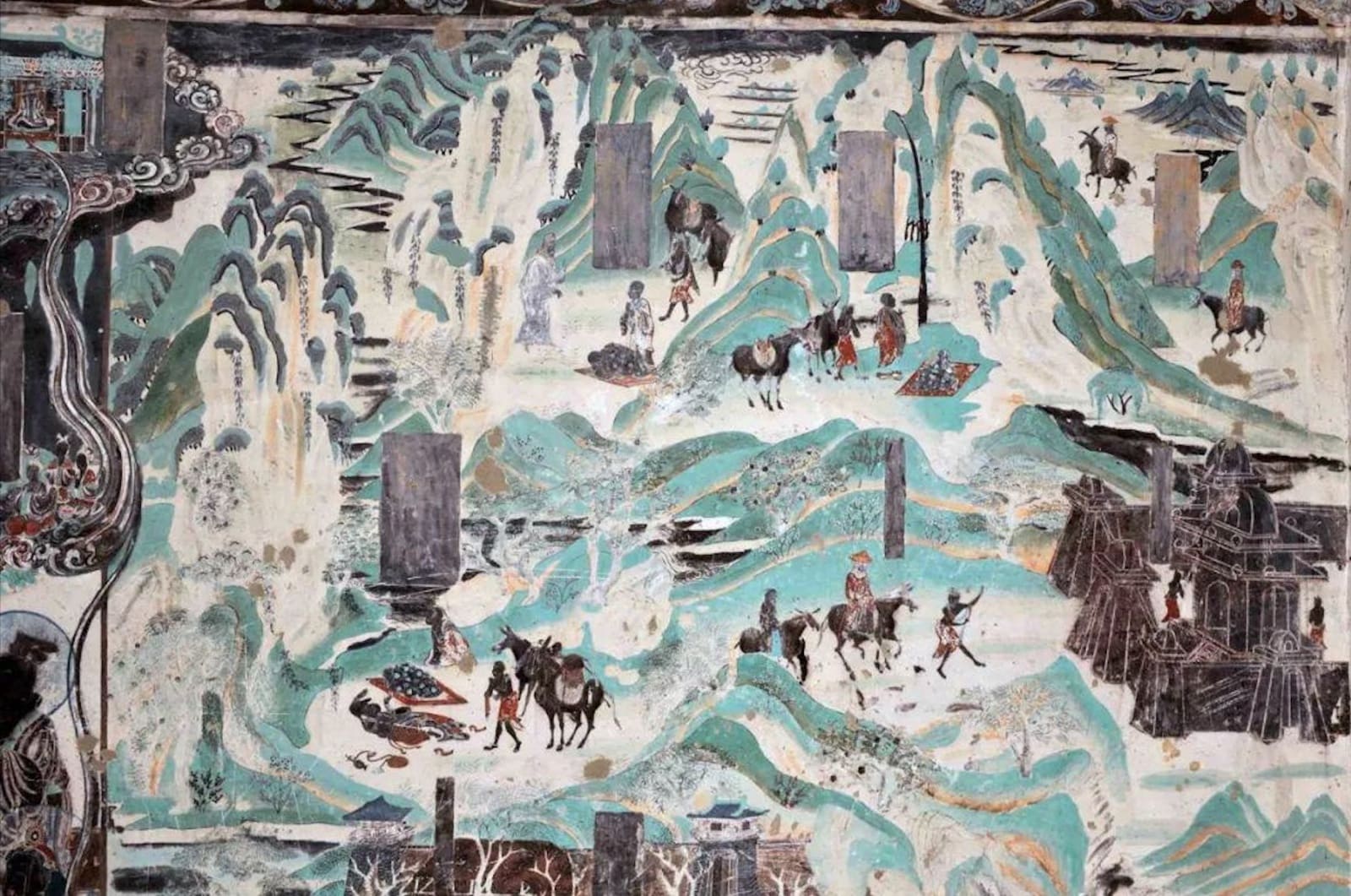
Parable of the Illusory City from the Lotus Sutra, Cave 217 Mogao Grottoes, High Tang Dynasty 705-780 A.D.
The versatile ink of Wang Jieyin’s works and the magnificent colours of Dunhuang Mogao Grottoes share a similar beauty and quality despite their differences. Take the “Cave 217” built in the Northern Wei Dynasty as an example. The Parable of the Illusory City on the upper right corner of the main cave painting is one of the classics from the Lotus Sutra.
It depicts a scene in which various characters are walking and riding in-between the green mountains and water. They represent the story from the Sutra in which a group of people travelled far to find treasure. After encountering many difficulties and dangers, the group stopped in exhaustion and even thought of giving up. At that moment, the mentor with highest wisdom among them conjured an illusory city for everyone to take rest in for a while. However, the group began to feel too comfortable to move forward with their journey. Upon discovering this, the mentor turned the city away and told the group that only by perseverance could they find the treasure they were seeking.
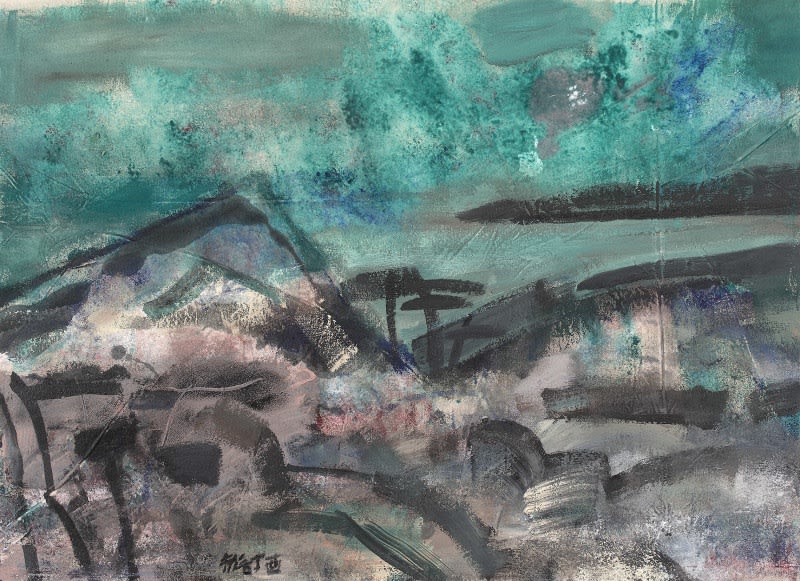
Whether it is the meticulous brushworks and enriched colours in the Dunhuang Mogao Grottoes, or the blooming colours and lively patterns in Green Skies, both paintings create an atmosphere of blue-green shan shui, first formulated by the Chinese painter Li Sixun from the Tang Dynasty. The brushwork is vigorous, evoking turbulent water and misty clouds. The distinctive temperament of oriental culture has certainly had a profound influence on Wang Jieyin's paintings, which we can detect and reflect on in Green Skies.

